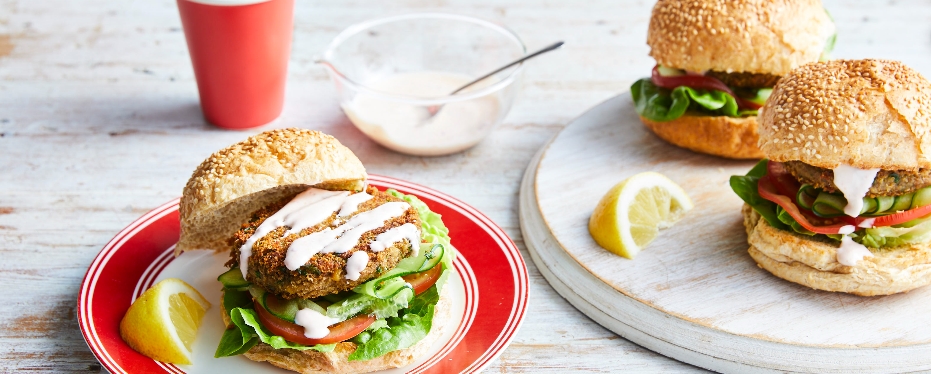
We spill the beans on beans
7 reasons why you need more legumes in your life
They come in all shapes, sizes, and colours. They’re cheap, delicious, and last forever (well, a long time, anyway). Oh, and they’re the star of one of the most well-known fairy tales of all time – Jack and the beanstalk. Yes, that’s right, in this blog we’re talking all things legumes including beans, chickpeas, lentils and even peanuts. Think you’ve bean there, done that when it comes to these protein-packed pantry staples? Well think again! Here are seven reasons why you need more legumes in your life.
1. They’re nutritious and great for your heart
Legumes are one of the quiet achievers when it comes to healthy eating. They contain antioxidants and vital minerals and nutrients like folate, iron and magnesium. Legumes are also high in protein and fibre and have a low glycaemic index (GI), which means they keep you feeling fuller for longer. Talk about an all-rounder! And when it comes to your heart, these little powerhouses can also reduce cholesterol and blood pressure, and risk of coronary heart disease, the leading cause of heart attack.
2. They’re affordable with a long shelf-life
Beans are a budget-friendly pantry staple with a particularly long shelf-life – check out the use-by date next time you’re at the shops. And if you have the storage space, a top money-saving tip is to consider buying canned or dried beans in bulk.
Never used dried legumes before? They’re easy to prepare! Legumes like lentils and split peas can be cooked right away without soaking by boiling them in water (cooking time will vary depending on the legume). Other legumes like chickpeas, black beans and kidney beans can be soaked overnight in water to help reduce the cooking time and to help with digestion – see reason number seven! Find more legume cooking tips here.
3. They’re super versatile and easy to cook with
When it comes to including more legumes in your cooking, think outside the box. You can include beans, chickpeas or lentils in almost any recipe, even desserts! Why not try adding...
beans to your taco mix for a protein-packed punch
lentils, chickpeas or beans to jazz up soups – add them in whole or blend them up
canned mixed beans to give colour and texture to salads
baked beans (with no added salt and sugar) on wholegrain toast makes a quick and easy meal when you’re short on time. Or why not try making your own using our homemade baked beans recipe?
We’ve heard on the (pea) vine some people don’t enjoy eating legumes due to their texture. If this sounds like you, the good news is beans, chickpeas and lentils are so versatile, you can change the texture to suit you.
Try them in dip form! Why not make your own hummus, which has a creamy, smooth texture? Perfect with vegetable sticks.
Blend them up to make plant-based burger patties, like our Moroccan veggie burgers with lemon chilli yoghurt or our spiced pumpkin and black bean patties.
Need a snack with some crunch? Try baking canned chickpeas in the oven with a little olive oil and your favourite herbs and spices for flavour.
Tip: Rinse canned legumes to remove the excess salt.
4. They can help you strive for five
Did you know that you can count legumes in your five serves of veggies a day? One serve is equivalent to half a cup of cooked beans, peas or lentils. And when you include them in dishes like our falafel bowl or curry bean burgers, you can tick off multiple servings of veggies at once. We’re all about making it a little easier to get your five a day!
5. They’re great for your gut
While legumes can have a bit of a gassy reputation, this is the fibre doing its magical job to keep your gut healthy! To minimise any side effects, the best advice we can give is to increase your legume consumption gradually over several weeks, as it gives your body time to adjust.
Some other strategies you can try include:
starting with one type of legume like chickpeas first, then add in a new variety the following week
making sure you stay physically active and keep hydrated to help your gut adjust to the increased fibre in your diet
rinsing canned legumes (and soaking and rinsing dried ones) can also help.
6. They offer options for people with dietary preferences
According to the Heart Foundation’s What Australia Eats report, around a third of Australians have a dietary preference, including vegetarian, low dairy or lactose-free and coeliac or gluten-free. If you have one of these preferences, legumes have got you covered!
For people who want to reduce their meat consumption, beans, lentils and chickpeas are great alternatives. And did you know the main ingredient of tofu is soybean, another type of legume? For more inspiration, get your free copy of our meat-free recipes book.
For people who opt for low dairy or lactose-free diets, plant-based milks are a popular option. Soy milk, for example is made from legumes. When opting for plant-based milks, remember to go for a no added sugar version.
For people with coeliac disease or those who follow a gluten-free diet, legumes are again here to save the day! They’re often used to make gluten-free versions of staple foods, including flour and pasta.
7. They’re planet-friendly and sustainable
Did you know that beans and legumes are sustainable foods, meaning they can be grown and harvested for many generations? They’re not only good for you, they’re also good for the planet!
Beans and lentils often come from sustainable crops. They are hardy plants and can survive on light rains and moisture stored in the soil. Legumes are also good at introducing nitrogen into soil, which is important for plant growth. For this reason, legumes are useful crops for farming, as other non-legume crops can benefit too.
The other great thing is that legume cans can be recycled. As for dried legumes, check the labelling on the pack to see if the packaging can be recycled. Read more about the environment, food sustainability and heart health here.
Hopefully we’ve convinced you to add beans, chickpeas and lentils to your weekly shopping list! Visit our website for more information about following a heart-healthy eating pattern and to explore our range of over 350 recipes.
You might also be interested in

4 essential jobs your body does while you sleep
On average, humans spend about one third of our lives asleep. That might seem like a lot of time to dedicate to snoozing, but it may actually be one of the most productive things you do!

A short history of rheumatic heart disease in Australia
RHD continues to disproportionately affect Aboriginal and Torres Strait Islander Peoples. So why are the rates of Aboriginal and Torres Strait Islander Peoples suffering from RHD so high?

Five reasons to focus on women’s heart health
Why is the Heart Foundation raising awareness about women's heart health? Learn about some of the unique challenges faced by women.
Last updated15 August 2025
Last reviewed15 August 2024